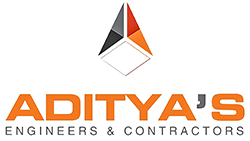
Civil Construction
Civil Construction

Jacketing
Jacketing is used to strengthen weak and distress RCC members which have been deteriorated. In this method extra rebar's are provided and the cross-sectional area is increased to increase the compressive strength by using concrete of specified grade.
Polymer Treatment
There are many cases where the steel corrodes due to various causes such as lack of cover, leakage of roofs & walls etc. One of the most common treatments for such structural strengthening is polymer mortar treatment. In this we remove all loose particles of mortar, concrete, rust, etc. from the spoiled surface and apply polymer modified mortar over the necessary surface as per the manufacturer's specification.
Thixotropic Treatment
Thixotropic treatment is an effective method for repairs of damaged structural elements of concrete beams & columns where the damage is extensive and high strength is required for stability. The methodology for executing this is the same as polymer only the materials that are being used are different. The compressive strength which is received after doing Thixotropic treatment is more than 45 N/mm2.
- Fibre wrapping
The use of advanced composite fibre-wrap is the new technique in the emerging market of structural rehabilitation industry. The procedure of wrapping requires skilled labour as it is not simple and the application is done in the supervision of qualified Engineers.
-Micro concreting
Micro-concrete is generally used as a repair for damaged reinforced concrete elements like beams, columns, wall, etc. where access is restricted and compaction is not possible. Advantage of Micro-concrete is rapid strength gain to facilitate early reinstatement and is free flow material.
Epoxy Grouting
Epoxy based grouting is preferred to cement due to its properties of quick setting, very low shrinkage, excellent adhesion, high strength, low viscosity to penetrate, hair cracks and good resistance to most of the chemicals and can strengthen the core to fullest.
